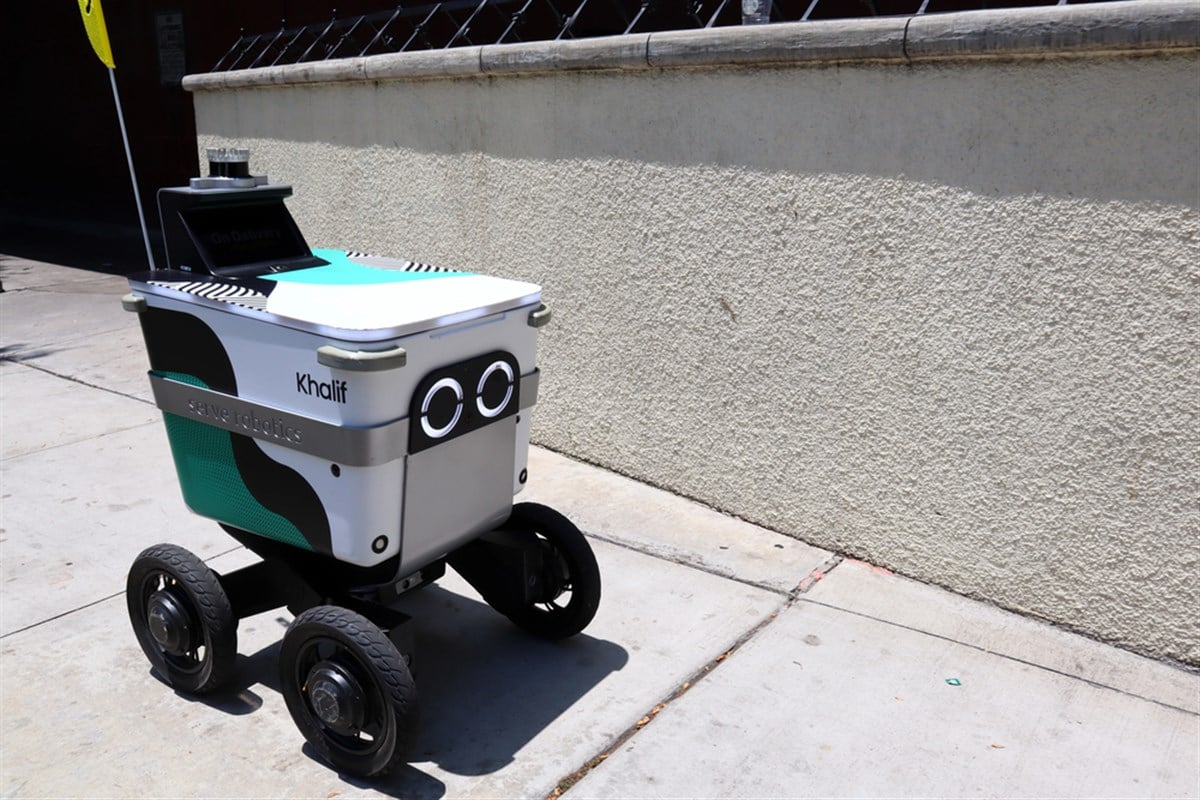|
|
|

|
|||||

|
|

A notable surge in market activity has placed Serve Robotics (NASDAQ: SERV) firmly on multiple investor watchlists. With average trading volume frequently exceeding 7 million shares, the autonomous delivery company has captured significant attention in a highly crowded market.
This focus, however, is anchored by a foundational, strategic partnership with global logistics leader Uber Technologies (NYSE: UBER), an alliance already translating into tangible growth and defining the company’s path forward.
The agreement to deploy up to 2,000 of Serve’s sidewalk delivery robots on the Uber Eats platform is not a distant concept, but a commercial rollout is already in motion. This provides a concrete basis for evaluating the stock's potential and separates Serve from competitors still in their development's conceptual or small-scale pilot phase.
To understand the investment case for Serve Robotics, investors should look beyond a simple client-vendor dynamic. Uber's relationship with Serve Robotics is a deeply integrated partnership built on a shared history and aligned financial interests.
Serve Robotics began as the robotics division of Postmates, which Uber later acquired. This shared origin provides Serve with an ingrained understanding of the demands of a central delivery platform.
More importantly, Uber remains a major institutional shareholder in Serve Robotics. This creates a powerful strategic alignment where Uber is financially invested in Serve's long-term success, fostering a collaborative environment aimed at mutual growth.
The partnership’s ambition is reflected in its scale: an agreement to deploy up to 2,000 robots across multiple U.S. markets. For Uber, this provides a cost-effective, zero-emission solution for high-density urban delivery routes. For Serve, it offers immediate, scaled demand and invaluable operational data.
This plan is in the execution stage, and Serve’s financial reports provide clear evidence that the partnership is generating significant operational momentum.
For investors, operational success is only meaningful when it translates into a clear financial outlook. Serve Robotics has provided a quantifiable target that directly connects the execution of the Uber Eats partnership to its future revenue potential.
Management has guided for a projected annualized revenue run-rate of $60 million to $80 million. This financial target is explicitly contingent on the full deployment and target utilization of the 2,000-robot fleet, creating a direct link between the partnership's success and a significant revenue stream.
To put this in perspective, achieving the upper end of this guidance would represent revenue of more than 13% of the company's current market capitalization of approximately $590 million, illustrating the potential for a significant re-valuation of Serve’s stock price upon successful execution.
This guidance is a critical valuation tool, providing a clear milestone against which investors can track progress. The year-over-year growth in daily active robots, from 48 in Q2 2024 to 160 in Q2 2025, is a leading indicator of the company’s progress toward this goal.
The company's strong financial position is a crucial element supporting this ambitious rollout. A growth-stage technology sector company’s biggest hurdle is often the capital required to scale. Serve Robotics appears well-positioned to overcome this challenge, reporting $183 million in cash and short-term investments as of June 30, 2025.
This substantial cash runway, which contrasts sharply with many pre-revenue tech startups facing constant dilution risk, is expected to fully fund the 2,000-robot deployment and support operations through 2026. This financial stability ensures the company can remain focused on executing its strategic plan.
The market’s heightened interest in Serve Robotics appears justified by the fundamental strength of its foundational partnership.
The alliance with Uber Eats provides a rare combination for a company in a disruptive sector: technological validation from an industry leader, a clear and executable plan for scaling, and a direct line of sight to a substantial revenue stream.
The company is building robots and a national logistics network on the back of one of the world's largest delivery platforms.
While execution remains key, Serve Robotics presents a compelling, data-backed opportunity to invest in the tangible commercialization of last-mile delivery.
Before you make your next trade, you'll want to hear this.
MarketBeat keeps track of Wall Street's top-rated and best performing research analysts and the stocks they recommend to their clients on a daily basis.
Our team has identified the five stocks that top analysts are quietly whispering to their clients to buy now before the broader market catches on... and none of the big name stocks were on the list.
They believe these five stocks are the five best companies for investors to buy now...
The article "The Uber Eats Partnership Fueling Serve Robotics' Growth" first appeared on MarketBeat.
| 40 min | |
| 1 hour | |
| 4 hours | |
| 4 hours | |
| 4 hours | |
| Dec-11 | |
| Dec-11 | |
| Dec-11 | |
| Dec-11 | |
| Dec-11 | |
| Dec-11 | |
| Dec-11 | |
| Dec-11 | |
| Dec-11 | |
| Dec-11 |
Join thousands of traders who make more informed decisions with our premium features. Real-time quotes, advanced visualizations, backtesting, and much more.
Learn more about FINVIZ*Elite